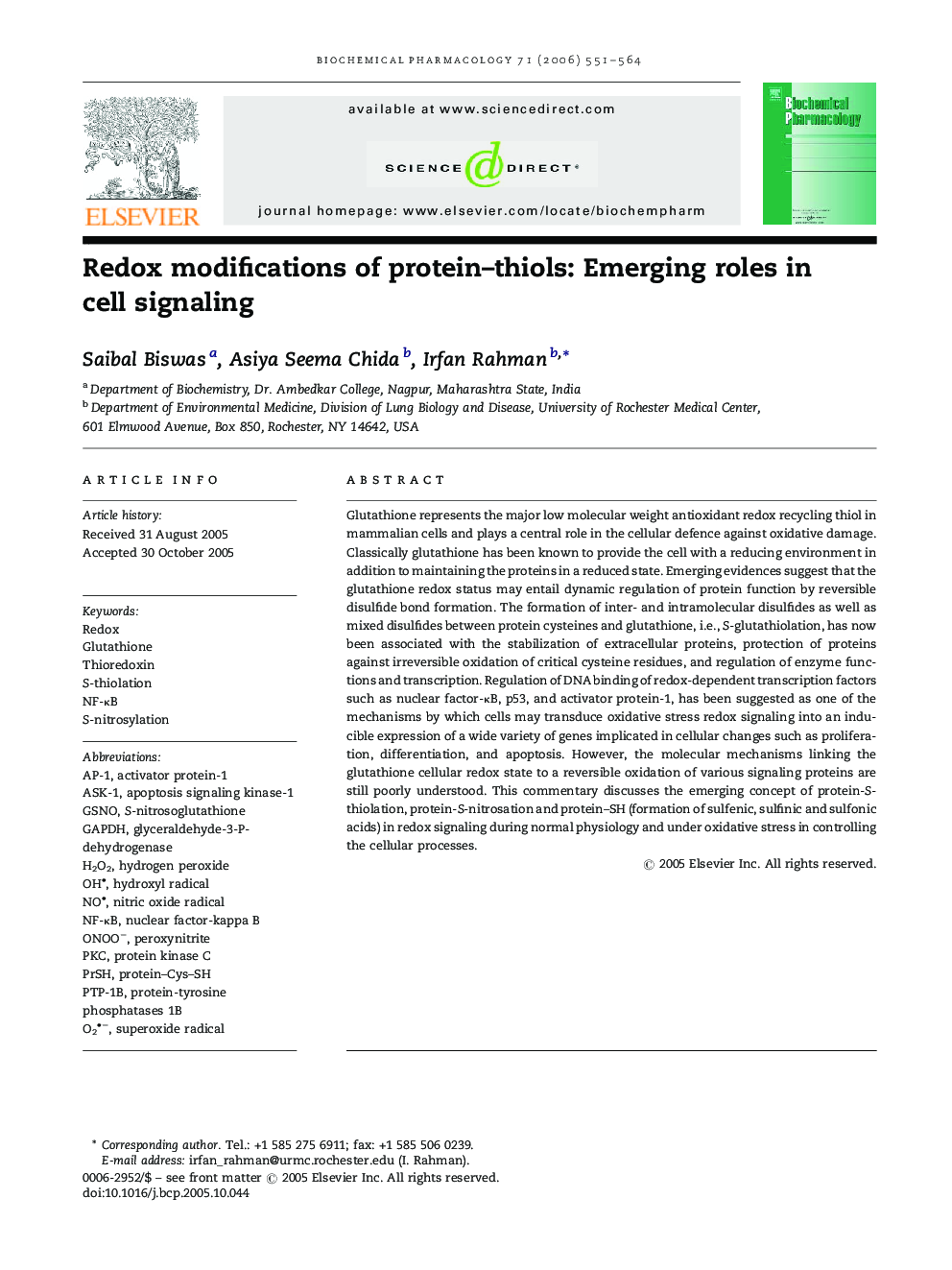| کد مقاله | کد نشریه | سال انتشار | مقاله انگلیسی | نسخه تمام متن |
|---|---|---|---|---|
| 2515334 | 1118513 | 2006 | 14 صفحه PDF | دانلود رایگان |

Glutathione represents the major low molecular weight antioxidant redox recycling thiol in mammalian cells and plays a central role in the cellular defence against oxidative damage. Classically glutathione has been known to provide the cell with a reducing environment in addition to maintaining the proteins in a reduced state. Emerging evidences suggest that the glutathione redox status may entail dynamic regulation of protein function by reversible disulfide bond formation. The formation of inter- and intramolecular disulfides as well as mixed disulfides between protein cysteines and glutathione, i.e., S-glutathiolation, has now been associated with the stabilization of extracellular proteins, protection of proteins against irreversible oxidation of critical cysteine residues, and regulation of enzyme functions and transcription. Regulation of DNA binding of redox-dependent transcription factors such as nuclear factor-κB, p53, and activator protein-1, has been suggested as one of the mechanisms by which cells may transduce oxidative stress redox signaling into an inducible expression of a wide variety of genes implicated in cellular changes such as proliferation, differentiation, and apoptosis. However, the molecular mechanisms linking the glutathione cellular redox state to a reversible oxidation of various signaling proteins are still poorly understood. This commentary discusses the emerging concept of protein-S-thiolation, protein-S-nitrosation and protein–SH (formation of sulfenic, sulfinic and sulfonic acids) in redox signaling during normal physiology and under oxidative stress in controlling the cellular processes.
Journal: Biochemical Pharmacology - Volume 71, Issue 5, 28 February 2006, Pages 551–564